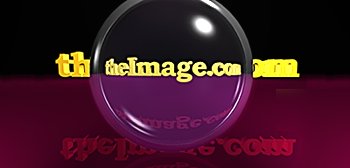
|
|
||||
|
Digital Photography
Image Size vs. Storage |
||||||||||||||||||||||||||||||||||||||||||||||||||||||||||||||
|
Now that we have all decided to go out an buy a Digital Camera, lets talk about their images and how we will transfer them into our computer for further editing. Why not capture and store all digital images at their maximum resolution and color depth? Did you notice the word "store", digital images take up space to save and store. How much space does an image take up? I'm glad you asked ... Color digital images are made up of three parts based on the colors (RGB) from which they come. Each digital image is actually a set of three images, one RED, one BLUE, and one GREEN. Each of these images typically has 8 bits of depth. Remember when we talked about the A/D converter and its ability to divide the grey scale according to its bit depth? Well each of the three images is typically an 8 bit monochromatic representation, and together 8 bit RED + 8 bit blue + 8 bit green we get the traditional 24 bit color image. |
||||||||||||||||||||||||||||||||||||||||||||||||||||||||||||||
|
Each pixel may have any value from 0 to 255, and that takes 1 byte of information to describe an 8 bit pixel or 3 bytes to describe a full color pixel (1 byte R, 1 byte B, and 1byte G). The resolution tells us how many pixels per inch there will be. The size times the resolution tells us the total number of pixels. file size = resolution (pixels per inch) x image size (inches) x color depth (bytes / pixel)
|
||||||||||||||||||||||||||||||||||||||||||||||||||||||||||||||
|
21" x
16" 1600 x
1200 32" x
24" 12,900
K 2400 x
1800 |
These two tables combine to show the memory needed to save color photo files at 3 resolutions and many image sizes. These do not take in to consideration compression which will be discussed next. The DPI values greater than 75 DPI serve two purposes, first they demonstrate resolutions that might be scanned rather than shot with a digital camera. Second you can easily convert them to larger size based on 75 DPI. For instance look at the 150 DPI column, the 8"x10" image @ 150 DPI would be the same file size as a 16" x 20" image @75 DPI. For any image in the 150 DPI column simply double the Image Size to see what the equivalent 75 DPI file size would be. |
|||||||||||||||||||||||||||||||||||||||||||||||||||||||||||||
|
You can do the same thing using the 300 DPI column but you need to quadruple the sizes to get their 75 DPI equivalents. Thus a 3" x 5" image @300 DPI is the same file size as a 12" x 20" image @ 75 DPI. Finally the last two rows show the size of native images taken from a 2 megapixel and a 4 megapixel camera without any compression. They are 5.5 MB and 12.9 MB per image. This will fill up even large hard disks rather quickly. So what's all this talk about compression? Maybe there is something to it after all. Compression is a mathematical method used to reduce the file size of an image. There are two types of compression, "lossless" and "lossy". Lossless compression means that the uncompressed image looks exactly like the original after decompressing it. The original is compressed, then uncompressed and the results are identical. Lossless compression is done using GIF formats, and PNG formats. It works well with limited color palettes and bold areas of continuous color. Unfortunately photographs tend to be microcosms of change, with many color changes in each sampling and hence not suitable to GIF compression or PNG compression. Note PNG can do photographic compression with full color, but the results are fairly useless. |
||||||||||||||||||||||||||||||||||||||||||||||||||||||||||||||
|
GIF compression GIF compression makes use of continuous patterns and repetitions of color. It also limits the palette to 256 colors (8 bit). It is called lossless as the original image has a one to one correspondence with uncompressed GIF image. It is only lossless in photos if you first drop the color space from 24 bit to 8 bit and then compress. So technically the 8 bit beginning photo does look exactly like the resultant photo. Of course you had to throw away about 99% of the original color information. The image on the top left is the original photo. The bottom image is the result after GIF compression and then decompression. The bottom is far more grainy and lacks detail especially in the background. Notice the color banding from the limited palette on the orange mushrooms. GIF compression is well suited to Sunday newspaper cartoons and simple solid color images. See my GIFOLOGY elsewhere on this WEB site if you want to fully explore the GIF format. It has some intersting uses, but photography is not one of them. |
|||||||||||||||||||||||||||||||||||||||||||||||||||||||||||||